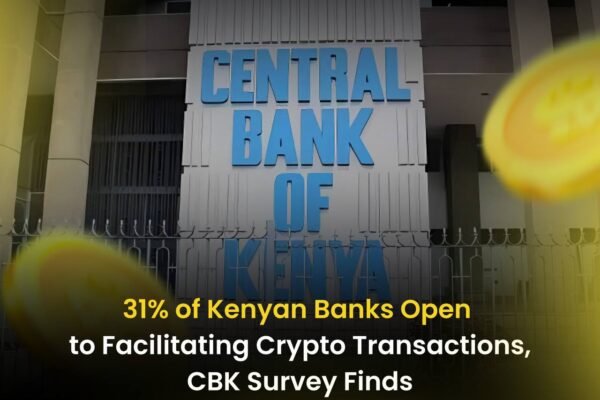

The Psychology of Crypto Trading: Why We FOMO, HODL, and Paper Hand
The Emotional Rollercoaster of Crypto Trading
Crypto trading isn’t just about charts and technical indicators—it’s about psychology. The biggest gains (and losses) often come from emotional decision-making, rather than pure strategy. Unlike traditional finance, the 24/7 volatility of crypto markets makes them even more susceptible to fear, greed, and impulsive reactions.
According to a study by The Behavioral Economics Journal, traders tend to make more irrational decisions in highly volatile markets—explaining why FOMO (Fear of Missing Out), HODLing, and panic selling are so common in crypto.
But what if we could train our minds to trade better? In this article, we’ll explore why traders fall into psychological traps, how these biases impact portfolios, and practical ways to build emotional discipline in crypto markets.

The Science Behind FOMO: Why We Chase Green Candles
FOMO is one of the most common emotional triggers in crypto trading. It occurs when traders see a coin rapidly rising in value and fear missing out on potential gains. This leads to impulsive buying, often at the peak of a rally, followed by regret when the price corrects.
Behavioral economics explains FOMO through herd mentality and loss aversion. When we see others profiting from an asset, our brain triggers a fear of missing out on the opportunity, making us act impulsively. A classic example was the 2021 bull run, where retail investors rushed to buy Bitcoin above $60,000, only to see it crash to $30,000 months later. On-chain data from Glassnode showed a surge in new wallet addresses during these peak moments, confirming that FOMO-driven traders were entering at the worst possible time.
To combat FOMO, traders should focus on fundamentals rather than hype. Setting predefined entry points and using dollar-cost averaging (DCA) can help avoid emotionally driven purchases.
The HODL Mentality: When Holding Becomes a Double-Edged Sword
The term “HODL” originated from a typo in a Bitcoin forum and has since become a philosophy among crypto traders. The idea is simple: rather than selling during market downturns, traders hold their assets long-term, believing in their future value.
HODLing has proven to be an effective strategy for many, particularly for those who invested early in Bitcoin or Ethereum. Historical data supports the idea that long-term holders tend to outperform short-term traders. For example, Bitcoin’s price has experienced multiple crashes, yet those who held through the volatility have often seen significant gains. However, the key to successful HODLing lies in understanding which assets have long-term potential and which do not.
While HODLing can be beneficial for long-term investors, it can also lead to confirmation bias—where traders ignore warning signs and hold onto assets that are fundamentally weak. A prime example was the collapse of Terra’s LUNA in 2022. Many investors refused to sell even after red flags emerged, believing it would recover, only to see their holdings go to zero. Similarly, during the 2017 ICO boom, many traders held onto altcoins with little utility, convinced they would rally again, only for most to fade into irrelevance.
Psychologically, the HODL mentality often stems from loss aversion and sunk cost fallacy. Traders become emotionally attached to their holdings, reluctant to sell at a loss, even when market conditions suggest doing so. This emotional attachment can prevent rational decision-making and lead to devastating losses. For example, on-chain data has shown that many retail investors tend to hold onto failing projects far longer than institutional investors, who are quicker to cut losses.
A rational approach to HODLing involves periodically reassessing a portfolio and setting take-profit and stop-loss levels. This ensures that holding is based on fundamentals rather than blind faith. Diversification is another key strategy—rather than putting all funds into one asset, spreading risk across multiple strong projects can help balance potential losses. Additionally, monitoring on-chain data, such as whale movements and exchange inflows, can provide insights into when major players are exiting a position, offering clues for retail investors to reconsider their own holdings.
In summary, while HODLing remains a valid and often profitable strategy, it should not be applied indiscriminately. A smart investor knows when to hold and when to exit, using both technical analysis and market sentiment to guide decisions. The key is to remain flexible, continuously learn, and avoid emotional biases that cloud judgment.
Paper Hands vs. Diamond Hands: The Psychology of Selling Too Soon
Paper Hands vs. Diamond Hands: The Psychology of Selling Too Soon
“Paper hands” refers to traders who sell too early out of fear, often missing out on potential gains. This phenomenon is driven by loss aversion, a behavioral bias where people experience the pain of losing money more intensely than the joy of making profits. When the market dips, paper-handed traders panic and sell, locking in their losses instead of waiting for a potential recovery.
For example, during the early days of Bitcoin, many investors sold their holdings when prices dropped from $1,000 to $200 in 2015. Those who panicked missed out on the massive bull run that followed, as Bitcoin eventually soared to over $60,000. A similar scenario played out during Ethereum’s early days when ETH dropped below $10 before skyrocketing to new highs.
On the flip side, diamond hands—investors who hold onto their assets despite extreme volatility—can be a double-edged sword. While strong conviction in solid projects like Bitcoin and Ethereum has historically paid off, blindly holding onto any asset can be risky. Some traders held onto scam projects like Bitconnect, ignoring clear warning signs, only to see their investments evaporate when the project collapsed.
The key to finding a balance between paper hands and diamond hands lies in having a risk management strategy. Setting clear entry and exit points, diversifying a portfolio, and maintaining an investment thesis can help traders avoid emotional decision-making. Instead of reacting impulsively to short-term price swings, disciplined investors stick to their strategy, whether that means taking profits gradually or cutting losses before they spiral out of control.
Additionally, on-chain data can provide valuable insights into market sentiment. Metrics like exchange inflows (suggesting selling pressure) or HODL waves (showing how long coins have been held) can offer traders a clearer picture of market trends, helping them make informed decisions rather than acting on fear or hype.
By combining logic, research, and a long-term perspective, traders can avoid the pitfalls of paper hands while ensuring that diamond hands don’t turn into blind stubbornness.
Overconfidence and the Illusion of Control in Trading
Overconfidence and the Illusion of Control in Trading
Many traders believe they can “outsmart the market,” leading to overconfidence. This bias makes traders overestimate their ability to predict price movements, often resulting in excessive risk-taking. The illusion of control is particularly dangerous in crypto, where market conditions can shift unpredictably due to factors like regulatory news, whale movements, and social media hype.
Studies show that retail traders, on average, underperform the market due to overtrading. Research from the Journal of Finance found that the most active traders tend to lose money over time, as frequent trading incurs high fees and emotional stress. Crypto’s decentralized nature makes this even worse, as leverage trading platforms allow users to take on extreme risk, leading to liquidations. A prime example of this was the 2021 bull run, where many traders took on excessive leverage only to be wiped out when Bitcoin retraced from its all-time high.
Overconfidence also manifests in the form of selective memory. Traders tend to remember their wins while conveniently forgetting their losses, reinforcing the belief that they are more skilled than they actually are. This fuels a cycle where traders take increasingly riskier bets, believing that they have a special ability to time the market.
The best way to counter overconfidence is through humility and data-driven decision-making. Keeping a trading journal to track mistakes and wins helps traders refine their strategies over time. Additionally, using objective indicators rather than gut feelings can help traders make more rational decisions. A disciplined approach that involves position sizing, portfolio diversification, and stop-loss orders can prevent catastrophic losses. Successful traders understand that markets are unpredictable and that survival in the long term is more important than trying to make quick, high-risk profits.
The Role of Social Media and Echo Chambers
Crypto Twitter, Reddit, and Telegram have become the heartbeat of the crypto community, shaping trader sentiment in real-time. These platforms provide instant updates, market analysis, and opinions from industry leaders, making them indispensable for traders looking to stay ahead. However, they also come with significant risks—chief among them being the creation of echo chambers where only bullish narratives are amplified, while dissenting opinions or bearish warnings are drowned out.
A perfect example of this was the 2021 Dogecoin rally. What started as a joke turned into a full-fledged market frenzy, driven largely by social media hype. Influencers, including Elon Musk, continuously tweeted about DOGE, fueling retail excitement and causing prices to skyrocket by over 12,000% within a few months. The Dogecoin community on Reddit and Twitter became an echo chamber, with many members dismissing any concerns about fundamentals or sustainability. However, once the hype faded and Musk distanced himself, DOGE crashed by over 80% from its all-time high, leaving many late investors at a significant loss.
Another example is the rise and fall of Terra’s LUNA in 2022. Prominent crypto influencers and Telegram communities aggressively promoted LUNA, reinforcing confidence among holders. Even as red flags emerged—such as unsustainable yield models and warning signs in on-chain data—social media narratives continued to push the idea that LUNA was “too big to fail.” When the collapse finally happened, many investors who had been influenced by community sentiment and refused to sell saw their holdings go to zero.
To avoid falling into the trap of social media-driven FOMO, traders should take a more measured approach:
- Diversify Information Sources – Instead of relying solely on Twitter influencers or Reddit threads, traders should seek insights from independent research reports, technical analysis, and on-chain data tools like Glassnode or Nansen.
- Verify Claims with On-Chain Data – Before making any trading decision, it’s essential to check actual blockchain metrics such as transaction volumes, whale movements, and liquidity levels. Hype-driven assets often show clear warning signs in on-chain activity before a crash.
- Avoid Making Decisions Based on Hype Alone – While social sentiment can be a useful indicator, it should never replace proper due diligence. Just because a token is trending or being hyped by a well-known personality doesn’t mean it’s a good investment.
How to Build Emotional Discipline in Crypto Trading
Understanding trading psychology is only half the battle; the real challenge is developing emotional discipline and applying strategies to manage emotions effectively. The crypto market is notorious for its extreme volatility, and traders who react impulsively to price swings often suffer losses. Developing a disciplined approach ensures that decisions are driven by logic rather than fear or greed. Here are some of the best methods to build emotional resilience in crypto trading:
1. Setting Stop-Loss and Take-Profit Levels
One of the most effective ways to remove emotional decision-making from trading is to predefine exit points. A stop-loss ensures that traders limit their losses by automatically selling an asset when it reaches a predetermined price. Conversely, a take-profit order secures profits by selling at a target price before market sentiment changes.
For example, if a trader buys Bitcoin at $40,000, they may set a stop-loss at $38,000 (to prevent excessive losses) and a take-profit at $45,000 (to lock in profits before a potential reversal). This approach eliminates emotional guesswork and prevents traders from holding onto positions for too long or panic-selling during market dips.
2. Using a Trading Journal
A trading journal is an invaluable tool for self-improvement. By documenting every trade—entry and exit points, reasons for making the trade, emotional state at the time, and overall outcome—traders can identify recurring patterns in their behavior.
For instance, a trader may notice that they frequently sell too early out of fear (paper hands) or hold onto losing trades too long due to overconfidence. Reviewing past trades helps pinpoint emotional weaknesses and refine strategies over time.
3. Practicing Mindfulness and Detachment
The crypto market moves 24/7, making it easy to become emotionally consumed by price fluctuations. Many traders develop market addiction, constantly checking charts and reacting impulsively to every small move. This can lead to stress, anxiety, and burnout, which negatively impact decision-making.
Practicing mindfulness can help traders stay grounded. Techniques such as meditation, deep breathing, and taking breaks from screens can create mental clarity. Detachment is also crucial—traders should view trading as a long-term game rather than a get-rich-quick scheme. Making rational decisions requires emotional balance, not an obsession with short-term price movements.
4. Avoiding Excessive Leverage
Leverage is a double-edged sword. While it allows traders to amplify their positions and potentially increase profits, it also significantly raises the risk of liquidation. High-leverage trading can be emotionally devastating, as even a minor price swing can wipe out an entire position.
For example, in the 2021 bull run, many traders used 50x or 100x leverage on Bitcoin long positions. When the market experienced sudden corrections, billions of dollars worth of leveraged positions were liquidated within hours, causing mass panic. To avoid this, traders should use leverage conservatively or avoid it altogether unless they have a deep understanding of risk management.
5. Developing a Strong Investment Thesis
Having a clear investment thesis prevents impulsive decisions. Before entering a trade, traders should ask themselves:
- Why am I buying this asset?
- What are the fundamentals backing this investment?
- Under what conditions will I exit (profit-taking or cutting losses)?
A well-defined strategy helps traders stay focused on long-term goals instead of reacting emotionally to short-term market movements.
Conclusion: Mastering the Mindset for Crypto Success
Crypto trading is as much a psychological battle as it is a technical one. The market is designed to exploit human emotions, leading to FOMO-driven buying, panic selling, overconfidence, and herd mentality. The traders who succeed are those who develop emotional discipline, stick to a strategy, and remain adaptable in different market conditions.
By implementing risk management techniques, diversifying information sources, and cultivating patience, traders can navigate the volatile crypto landscape with confidence. The key to long-term success is not just knowing when to buy or sell, but mastering the mental game of trading.
Read also: Decentralized Social Networks: How Web3 is Transforming Online Communities







